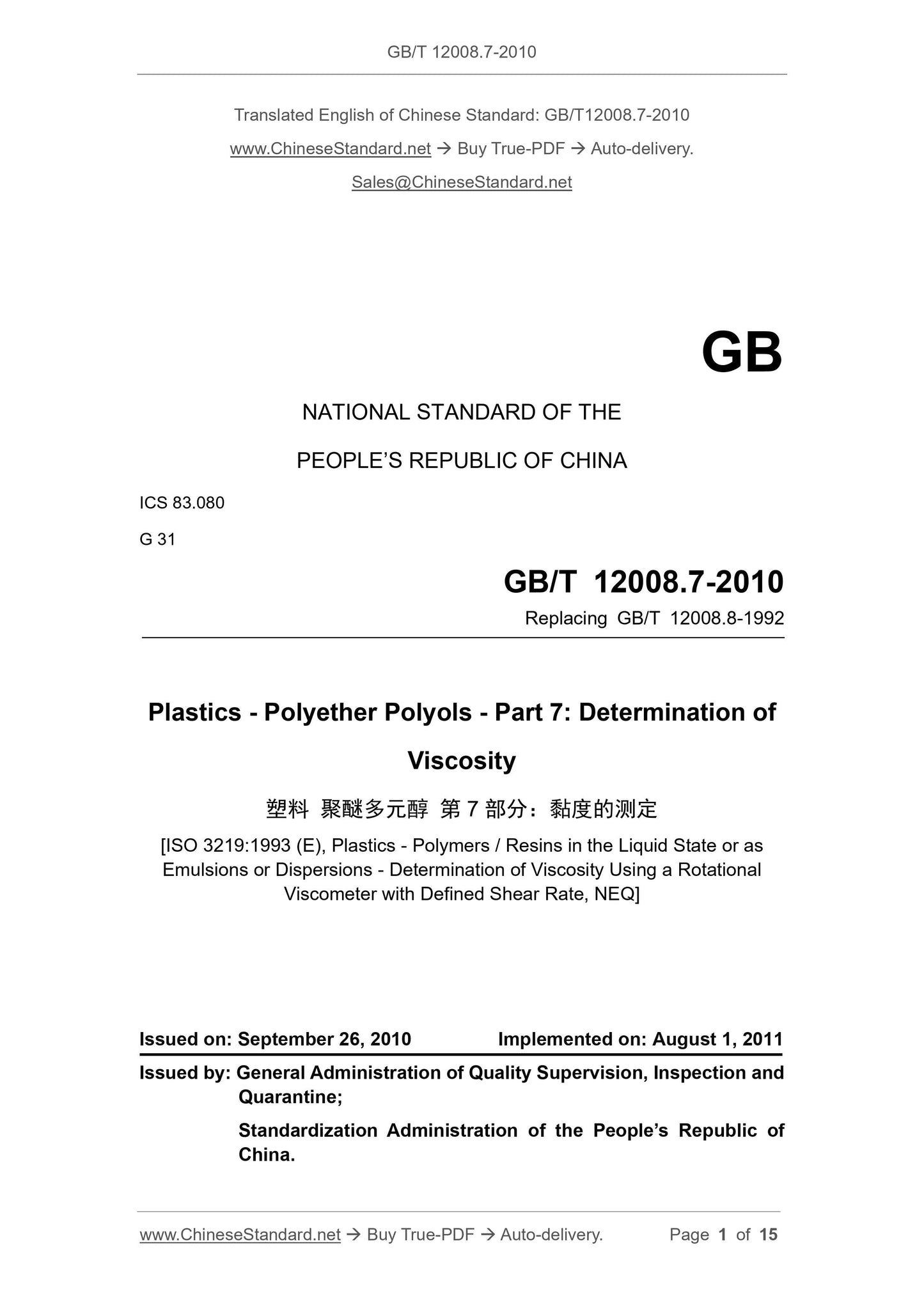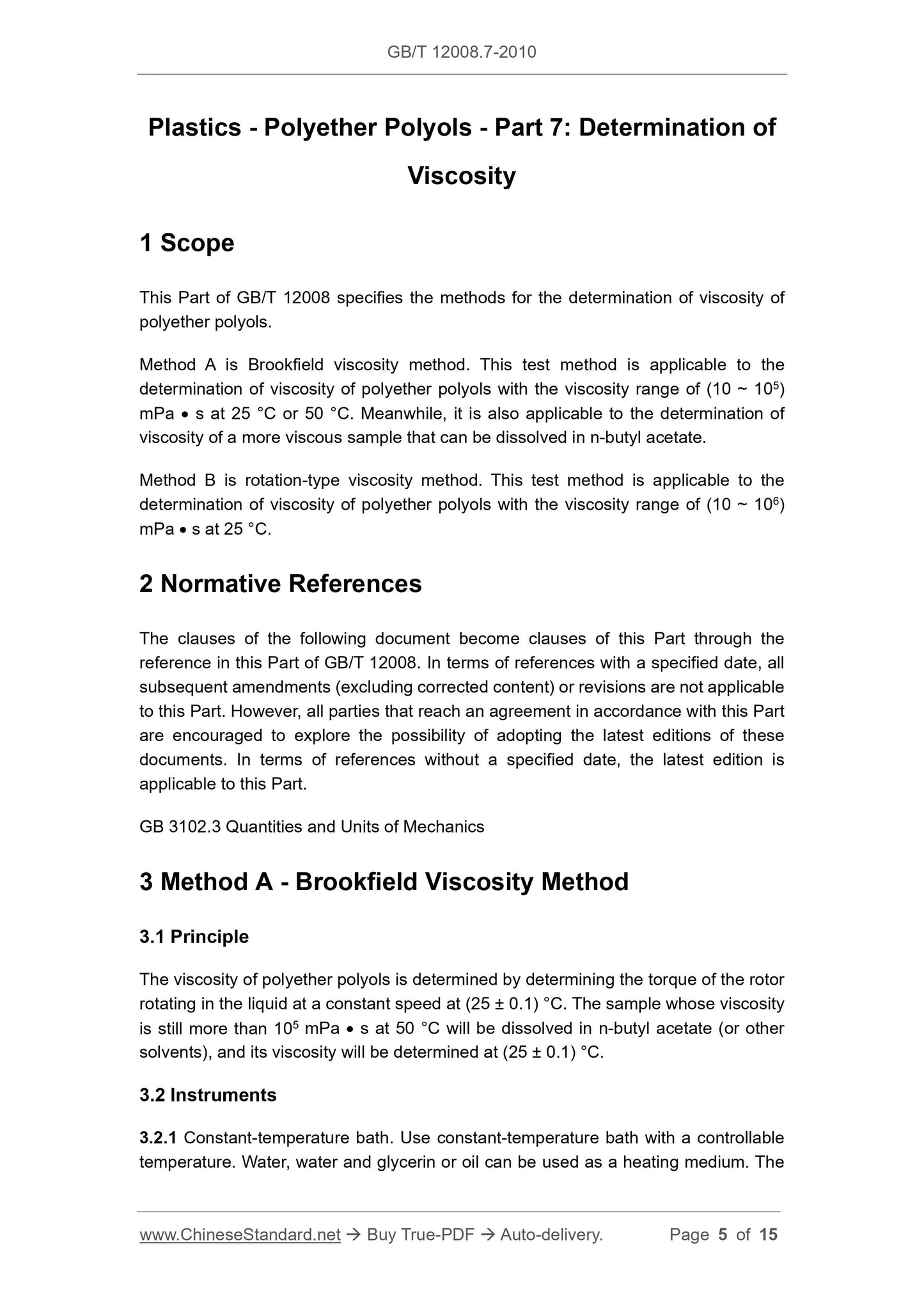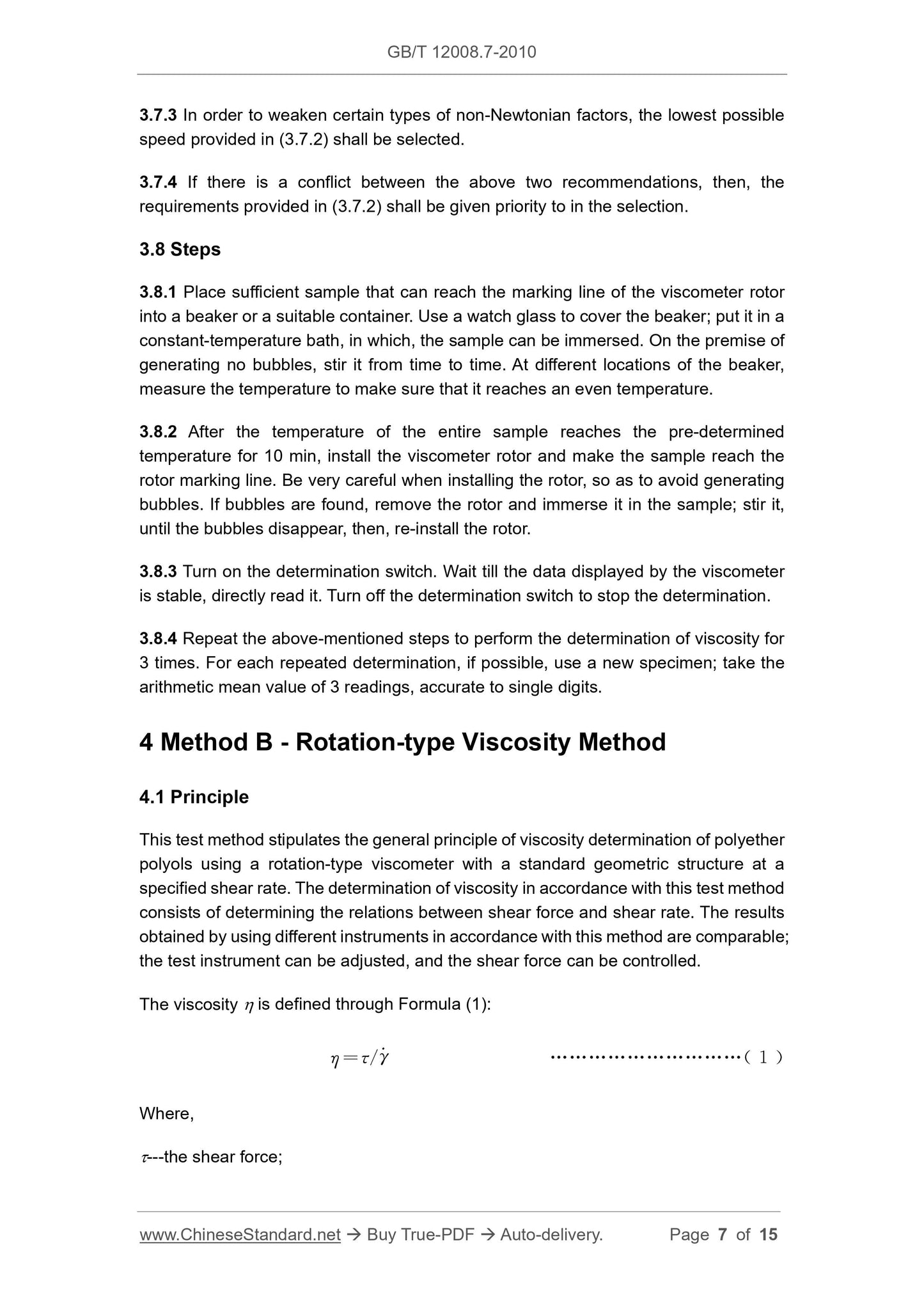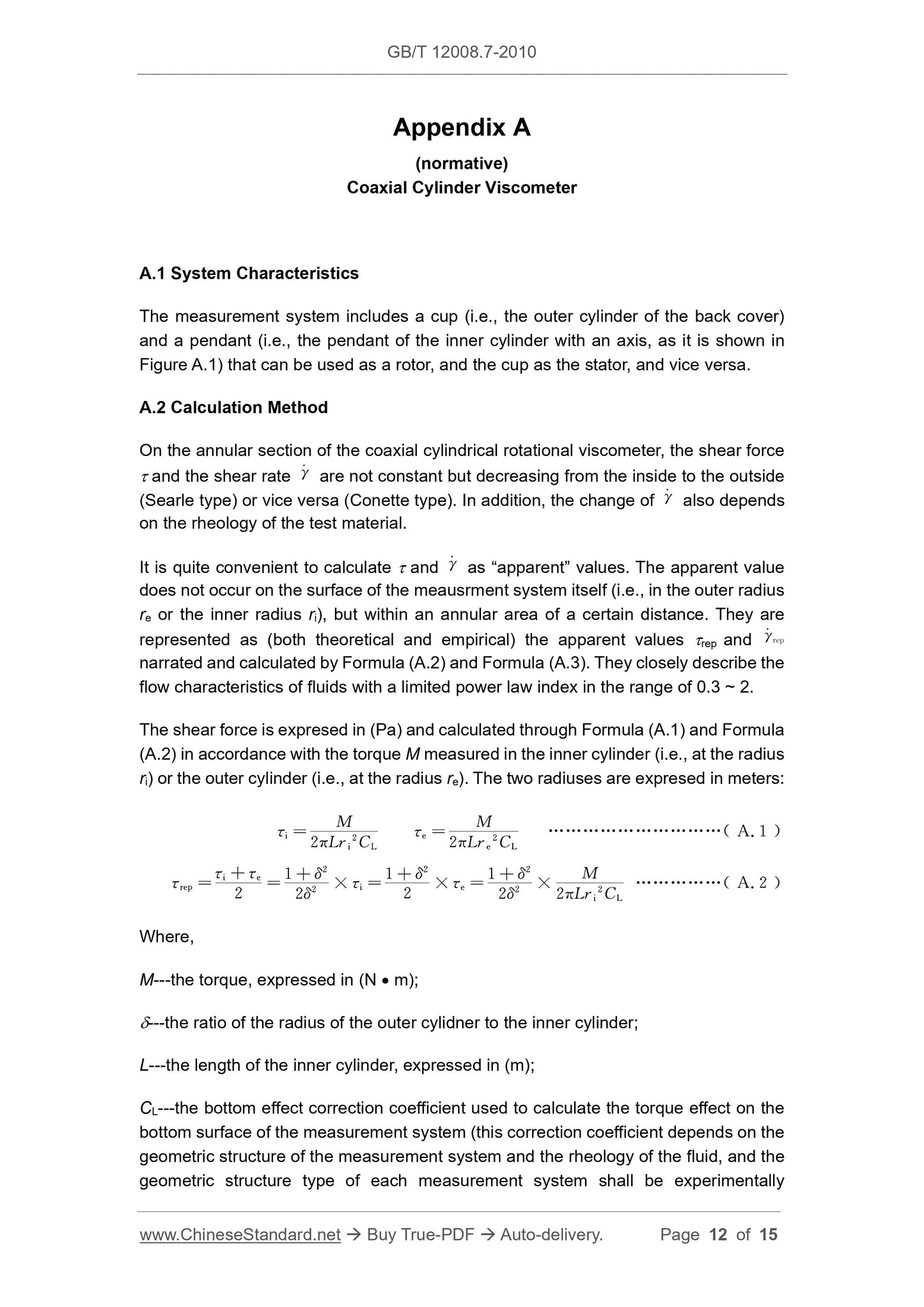1
/
of
6
www.ChineseStandard.us -- Field Test Asia Pte. Ltd.
GB/T 12008.7-2010 English PDF (GB/T12008.7-2010)
GB/T 12008.7-2010 English PDF (GB/T12008.7-2010)
Regular price
$190.00
Regular price
Sale price
$190.00
Unit price
/
per
Shipping calculated at checkout.
Couldn't load pickup availability
GB/T 12008.7-2010: Plastics -- Polyether polyols -- Part 7: Determination of viscosity
Delivery: 9 seconds. Download (and Email) true-PDF + Invoice.Get Quotation: Click GB/T 12008.7-2010 (Self-service in 1-minute)
Newer / historical versions: GB/T 12008.7-2010
Preview True-PDF
Scope
This Part of GB/T 12008 specifies the methods for the determination of viscosity ofpolyether polyols.
Method A is Brookfield viscosity method. This test method is applicable to the
determination of viscosity of polyether polyols with the viscosity range of (10 ~ 105)
mPa s at 25 °C or 50 °C. Meanwhile, it is also applicable to the determination of
viscosity of a more viscous sample that can be dissolved in n-butyl acetate.
Method B is rotation-type viscosity method. This test method is applicable to the
determination of viscosity of polyether polyols with the viscosity range of (10 ~ 106)
mPa s at 25 °C.
Basic Data
| Standard ID | GB/T 12008.7-2010 (GB/T12008.7-2010) |
| Description (Translated English) | Plastics -- Polyether polyols -- Part 7: Determination of viscosity |
| Sector / Industry | National Standard (Recommended) |
| Classification of Chinese Standard | G31 |
| Classification of International Standard | 83.080 |
| Word Count Estimation | 10,116 |
| Date of Issue | 2010-09-26 |
| Date of Implementation | 2011-08-01 |
| Older Standard (superseded by this standard) | GB/T 12008.8-1992 |
| Quoted Standard | GB 3102.3 |
| Adopted Standard | ISO 3219-1993, NEQ; ASTM D4878-2003, NEQ |
| Regulation (derived from) | National Standard Approval Announcement 2010 No.6 (Total No.161) |
| Issuing agency(ies) | General Administration of Quality Supervision, Inspection and Quarantine of the People's Republic of China, Standardization Administration of the People's Republic of China |
| Summary | This standard specifies the method for measuring the viscosity of polyether polyols. A method for the Brookfield viscosity methods. This test method is applicable to mPas viscosity polyether polyol was measured at 25��C or 50��C when the viscosity range (10 to 105). While suitable for measuring the viscosity can be dissolved in n-butyl acetate is more viscous samples. Method B is a rotary viscosity method. This test method is suitable for the viscosity of the polyether polyol mPas measured at 25��C viscosity range (10 to 106). |
Share











